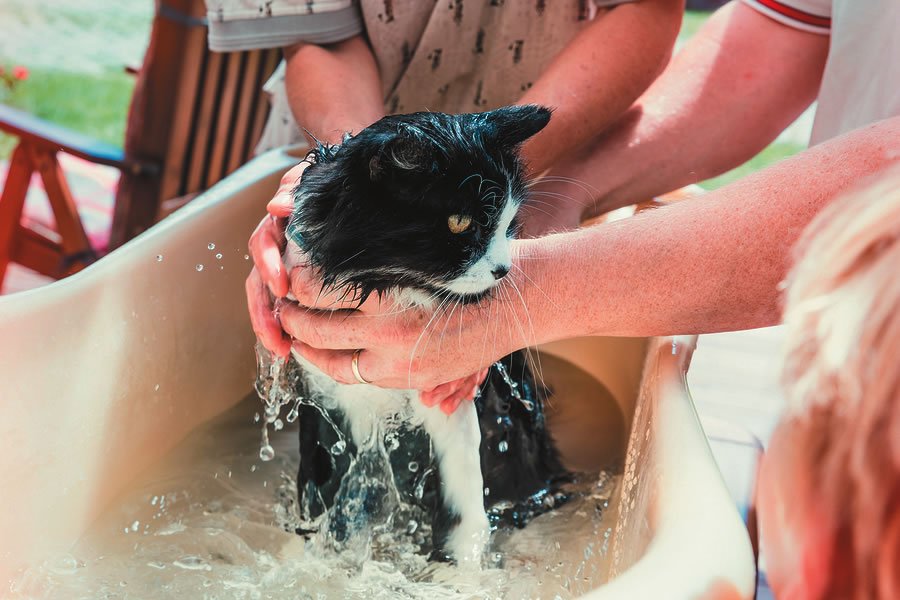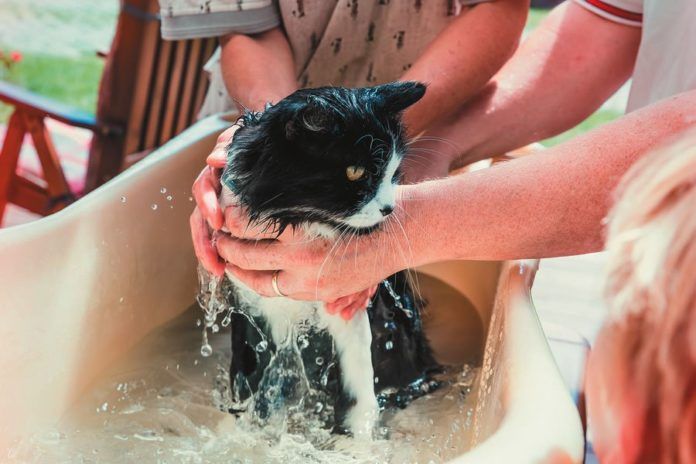© Nadege | Bigstock


You’re not imagining it. Your cat does spend an inordinate about of time self-grooming—fully a third of her day. And she does it consciously, using her teeth to separate her fur and dig down and comb, and her tongue to brush everything smooth. So why even consider giving her a bath, given her already fussy dedication to self-cleansing?
Because life happens, as you likely already know, and sometimes you have to step in to rid your pet of gummy or germy stuff that may build up over time and potentially lead to issues with irritation or even infection.
Before you consider how to bathe her, the American Society for the Prevention of Cruelty to Animals (ASPCA) says to consider under what circumstances so the experience is not traumatic — for either of you. First, make sure her claws are trimmed so she’ll do less damage if she panics despite your best efforts to keep things calm. In addition, try to wash her when she’s feeling relaxed and mellow. You can even create the right mood by tiring her out first with some fun playtime.
Now for deciding on the best way to do it:
In the sink
While a full sudsing and rinse offers the most thorough cleaning possible, it may amount to a sensory overload. You, as her primary wellness provider, are in the best position to decide.
If you go ahead and give your cat a soap-and-water bath, the sink should have no more than 4 inches of water, and it should be lukewarm — never hot. Put a rubber mat on the bottom of the sink, the ASPCA advises, so she does not slip and slide, but, rather, feels grounded. And place cotton balls in her ears to keep water out.
Use a shampoo intended for cats, and dilute to five parts water, one part shampoo, working the mixture from the back of her neck to her tail area. Keep your strokes in line with the direction of her hair growth. Rinse the suds thoroughly with a hand-held pitcher or hose, steering clear of her face and ears, which can be cleaned with a lukewarm washcloth. End bath time by wrapping your pet in a warm towel to dry her. Some cats will even tolerate a blowdryer on a low setting.
Moist, not wet
If your cat simply can’t handle a wet bath, consider pre-moistened wipes.
The wipes to buy are similar to baby wipes but formulated just for cats with conditioners and antibacterials appropriate for their fur. Don’t overdo it. Cleaning your cat too frequently risks irritating her skin.
Dry, not moist
For cats who won’t tolerate even a hint of moisture, dry shampoo will do a reasonable job of absorbing residue and dust from their fur. Dry shampoos come in a powder that you shake out from the container and work into your cat’s coat and skin with your fingers (wear rubber gloves). Finish by brushing through all that’s left. Burt’s Bees Waterless Shampoo for cats is one of several products that will do the trick.
Foams will work, too, only slightly dampening your cat’s fur as you work them in. Some people prefer foam to powder: it’s easier to towel off any residue and offers a less messy procedure all around. Earthbath and Vet’s Best are among the choices.




